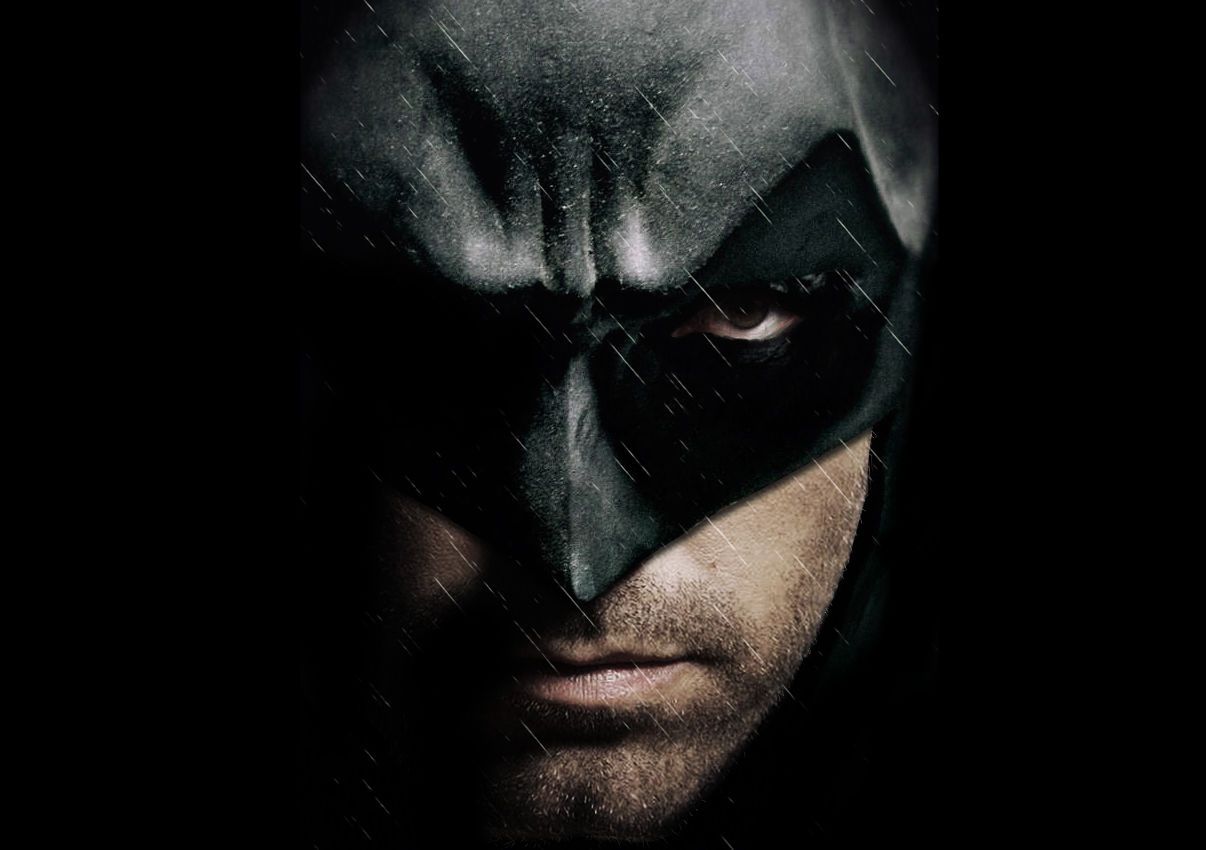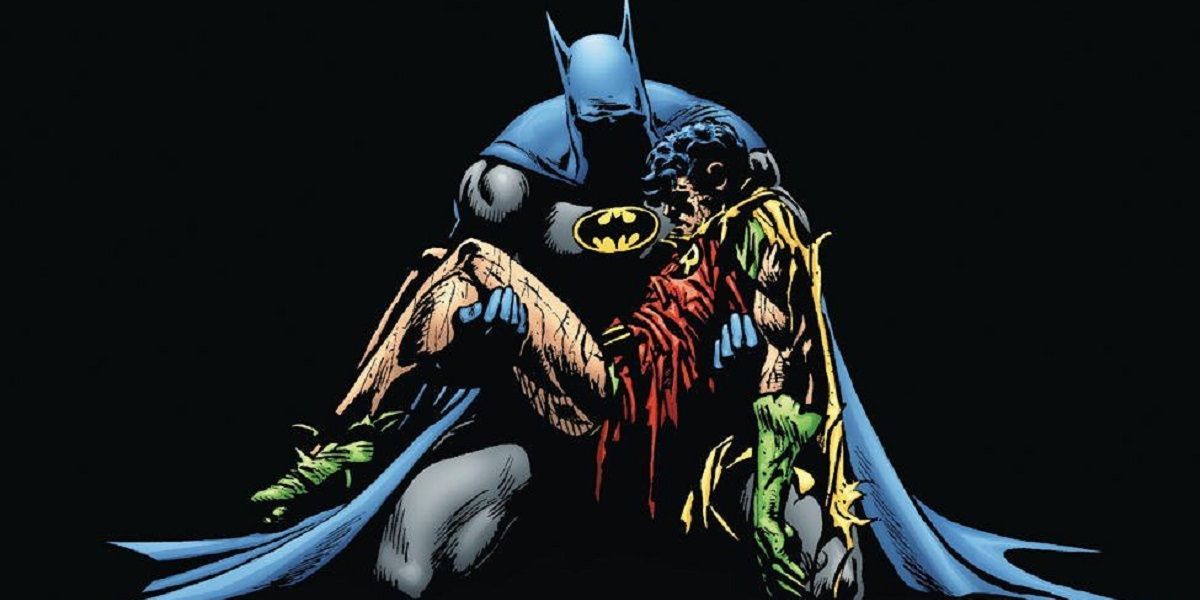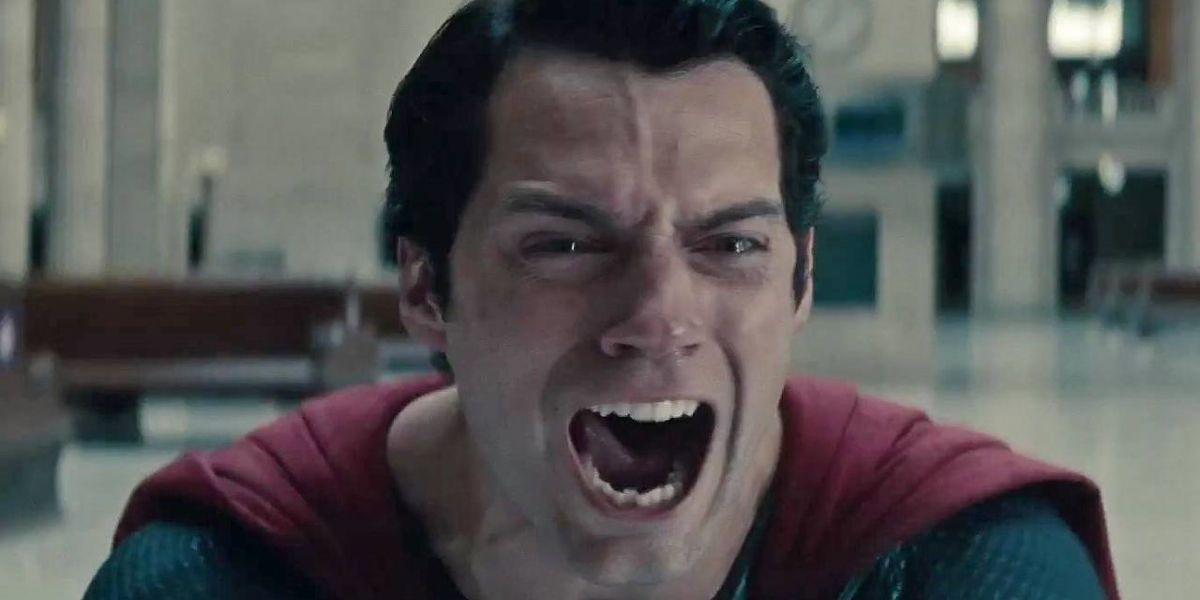NOTE: The following post contains one MILD SPOILER for Batman v Superman
-
Last week, the Batman v Superman: Dawn of Justice floodgates opened, unleashing a huge torrent of potential spoilers on the superhero-loving masses (we say “potential” because we have yet to ascertain the veracity of either the source or the information). Most of the info was big-picture, plot-divulging revelations, but there was one particular scrap that, while minor in scope, was arguably the most telling about the overall tone of the film, generally, and the new direction that Warner Bros. looks to be taking Batman in, specifically: the new Dark Knight “really enjoys dealing out pain.”
What makes this stand out so much? Two things. First, the movie’s various trailers have already officially established that Ben Affleck’s Batman will be a rather extreme individual, even going so far as to brand his criminal victims with a Bat symbol, reinforcing the possible scoop. But much more importantly, director Zack Snyder has gone on the record several times professing his love for Frank Miller’s take on the character and that, furthermore, Miller’s seminal Dark Knight Returns miniseries would serve as an active source of inspiration for Batman v Superman – which the titular fight between the two superheroes has already amply proved.
As we’ve previously explored at great length, Miller’s rendition of the Caped Crusader has become increasingly extreme over the decades, resulting in a character that is as sadistic as he is brutal (he even locks the recently-orphaned Robin in the Batcave and forces him to catch rats to eat – alive) and making Miller the single most controversial Bat-creator of all time. It seems that Snyder’s upcoming film may be an homage to Miller-Batman in more ways than one.
Which begs the not-insignificant question: Should Batman Be a Sadist? It may seem a glib one, but it’s a question that actually has quite profound ramifications for the entirety of the not-quite-off-the-ground DC Extended Universe.
Let’s dive into them.
Yes! Bring on the pain
Let’s sidestep the artistic (or moralistic) concerns of a masked vigilante practically getting off on inflicting pain on others for the moment – and let’s entirely skip the even-thornier question of whether his targets deserve their punishment or not – and just jump right into the precedent-setting nature of the move.
Cinematically, there have only been two different series of Batman films to date, but there have technically been twice as many takes on the character, thanks to both the number of actors who have portrayed him and the fact that director Joel Schumacher, who helmed Batman Forever and Batman and Robin, ended up wildly retooling the character between his productions. Audiences have seen a Batman who is campy and silly (Batman and Robin), who is silent and mostly obscured (Batman Returns), and one who is at the front and center of the dramatic as well as the physical action (Batman Begins). Through it all, the previous filmmakers have opted to depict the character at the early stages of his crime-fighting career, whether right from day one (Batman Begins) or a few months in (Batman).
Snyder and Affleck are providing a fundamentally different rendition. This Batman is older and grizzled, a 14-year veteran of the never-ending war on crime (something which Christopher Nolan’s The Dark Knight Rises flirted with but never fully delivered on). He’s had multiple Robins fight at his side, including at least one that has died in the conflict. This already puts Bruce Wayne into a darker mental space; in this regard, adding the extra layer of brutality is not that much of a stretch. When producing an eighth film in a franchise – and especially the second reboot – providing such a hugely divergent take on the material is not only (potentially) refreshing, it’s practically required to keep viewers and the filmmakers both interested.
There’s also this element to consider: perhaps this is Warner Bros. attempting to provide just the launching point for a multi-picture character arc for Batman, much like Marvel Studios did with Tony Stark, who started off his decade-long path in the first Iron Man being a self-absorbed, womanizing, emotionally callous individual. The Tony seen in the upcoming Captain America: Civil War – the character’s seventh appearance on the big screen – couldn’t be any more different. Seeing Batman follow a similar path of growth, especially as he possibly becomes the leader of the Justice League, could be one of the central-most engaging parts of the DCEU.
No! Tradition and restraint are the key
Given Frank Miller’s heavy-handed, politically-informed, and blatant writing-as-wish-fulfillment handling of Batman, there is much to be said for not following such a path, particularly in a medium that so many more individuals are exposed to the character in. There’s also the little fact that it could – and more than likely will – be jarring to the movie-going public; such long-lived series as Batman are dependent upon a foundation of familiarity and comfort (with strata of twists and turns thrown on top, of course), and the shattering of that bedrock could be enough to turn off significantly large portions of the audience. Imagine James Bond being depicted as a pacifistic, anti-war protestor who is forced to enlist in Her Majesty’s Secret Service, or consider the fact that Star Wars: The Force Awakens has proven to be so incredibly successful thanks to its nostalgia-fueled hewing to the original source material. Snyder could very easily be playing with fire here.
Another problem: Snyder has already made some similarly dark adjustments to Superman’s (Henry Cavill) character, making him cross a line in 2013’s Man of Steel – in the form of killing General Zod (Michael Shannon) – that never would have occurred in the comic books. The net result could be to create a nihilistic mythos - a world populated with (more or less) anti-heroes rather than superheroes, where principles can only go so far and morality is inexorably, perhaps even inherently, compromised. While this certainly would create a markedly different alternative to the Marvel Cinematic Universe, it may not ultimately prove to be a playground that viewers will long wish to dwell in.
And then, finally, there’s the whole ethical argument to consider. Should superheroes be depicted this way, where others’ pain is to not only be celebrated, but also delighted in? This isn’t just a matter of appearing appropriately dystopian, particularly in a post-9/11 era, as Nolan’s Dark Knight trilogy suitably pulled off. Marvel’s Daredevil Netflix series is similarly unrelentingly dark, but even here, after the protagonist spent the entire first season grappling with whether it was morally acceptable to murder New York’s overlord of evil, he lands on the side of the righteous. Even better, the upcoming second season has as his nemesis the Punisher, a character who would fit right into the DC Extended Universe’s roster of Superman, Batman, and, of course, the Suicide Squad. Superheroes are meant to be the paragons of empathy, after all – not the scions of solipsism.
-
What do you think – is Batman v Superman setting a dangerous precedent for the whole rest of the DC Extended Universe, or is it providing the nadir so that a future, majestic zenith can be reached? And, through all this, should Batman be a sadist?
Share your thoughts in the comments below.
Batman v Superman:Dawn of Justice will hit theaters on March 25th, 2016, followed by Suicide Squad on August 5th, 2016, Wonder Woman on June 23rd, 2017, Justice League on November 17th, 2017, The Flash on March 23rd, 2018, Aquaman on July 27th, 2018, Shazam on April 5th, 2019; Justice League 2 on June 14th, 2019, Cyborg on April 3rd, 2020, and Green Lantern Corps on June 19th, 2020.



